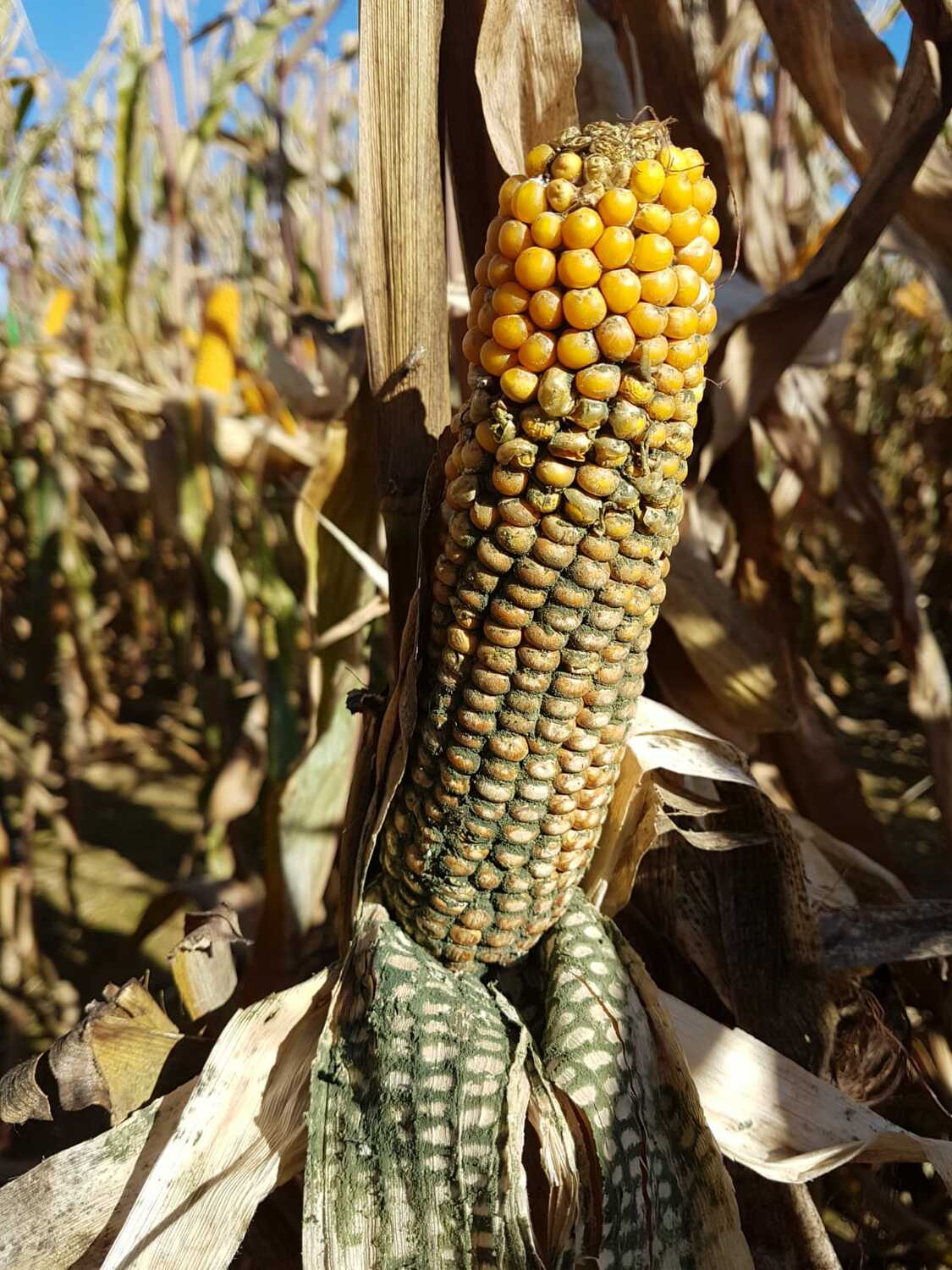The scientific flaws in that logic are well known, but the higher profits and environmental effects are real. Though California has only a tiny amount of organic produce, it requires 300 percent more pesticides to grow the same food as it would if they used regular farming. Organic farmers believe the higher profits are worth the higher economic and environmental costs.
It may be even worse, as a study based on a 2018 outbreak in Germany found. Some organic pesticides contain live spores of the fungus Trichoderma, which have the ability to suppress Botrytis (grey mold), Fusarium and to reduce rotting pathogens. It sounds good, nature fighting nature, except one Trichoderma species, Trichoderma afroharzianum, can cause severe rot in cobs of maize - corn.

The fungus Trichoderma in organic plant protection products can cause severe cob rot. Image:
A Pfordt, University of Göttingen
Numerous organic products containing Trichoderma are available on the market because they were given the seal of approval by trade groups who determine the organic standard. Trichoderma species belong to the ascomycetes and are found worldwide in the soil, on plant roots, in decaying plant remains and on wood. They act as decomposers of substrates and as antagonists of other microorganisms.
The new study resulted from massive outbreak of a previously unknown species of Trichoderma on corn cobs in Europe that was first detected in Southern Germany in 2018. In affected plants, grey-green spore layers formed on the grains of corn and between the leaves that form the husks of the cobs. In addition, the infested grains germinated prematurely.
To study how the organic pesticides were ruining the crops, the scientists brought maize plants in the greenhouse into contact with Trichoderma by inoculation. They were then able to prove that the dry matter content of the maize cobs is greatly reduced. Annette Pfordt, PhD student at the Department of Crop Sciences of the University of Göttingen and first author of the study, analyzed 18 separate Trichoderma strains mainly from maize cobs in Southern Germany and France over two years. Pfordt found that some of these strains are highly aggressive with a cob infestation of 95 to 100 percent. By means of molecular genetic analyses, these spores could be assigned to the relatively new species Trichoderma afroharzianum. Within this species of fungus, previously unknown plant-pathogenic strains seem to have evolved which are now responsible for this newly discovered disease affecting maize.
"The species used in organic plant protection products is a close relative, namely Trichoderma harzianum. Strains of this species were not as aggressive in the study, but in the inoculation experiments they also led to a slight infestation on the cob," saids Pfordt.
"Although the investigations carried out so far show that the Trichoderma strains used in organic plant protection products differ from the aggressive forms now found, it is also clear that the risks from the use of living microorganisms in plant protection must be thoroughly investigated," adds Professor Andreas von Tiedemann, head of the Department of Plant Pathology and Protection at the University of Göttingen.





Comments